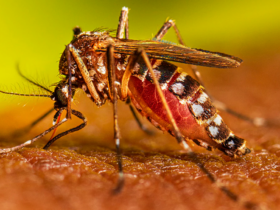United States: In one of the studies conducted recently at ASM meeting in Atlanta, it was discussed how the use of antibiotics found on the surface of oceans, is proving rather disastrous for ecology, and also an increased occurrence of antimicrobial resistance.
The survey took place in Jade Bay in the southern North Sea, Germany, where the stability of marine bacteria when exposed to antibiotics, including ofloxacin, clindamycin, clarithromycin, and novobiocin, was analyzed. According to ASM’s press release, significant percentages of marine bacteria showed resistance: For levofloxacin, it was 70 percent; for clindamycin, 95 percent; for clarithromycin, 58 percent; and for novobiocin, it was 100 percent. The exposure to serval antibiotics was highest in the sea samples, and novobiocin was particularly detected in this sample by CIDRAP news.
Interestingly, higher bacterial counts were found in samples from the sea surface microlayer compared to deeper waters despite the introduction of varying concentrations of ciprofloxacin. While bacterial numbers initially decreased with higher ciprofloxacin levels, they eventually rebounded, indicating a development of resistance over time.
At elevated ciprofloxacin concentrations, researchers identified 97 bacterial strains from over 14 classifications, with 59 percent capable of infecting humans, especially those with compromised immune systems.
Additionally, the study detected several other antibiotics, including lincomycin, tylosin, erythromycin, trimethoprim, sulfamethoxazole, roxithromycin, and chloramphenicol in the sea surface microlayer, albeit in limited quantities at deeper depths, as mentioned by CIDRAP.
Dr. Adenike Adenaya from Carl von Ossietzky Universitat in Oldenburg, Germany, stressed the collaborative effort needed to mitigate the ecological repercussions of antibiotic introduction into coastal waters. This accumulation in the sea surface microlayer not only impacts bacterial diversity but also fosters the adaptation of marine bacteria to antibiotics.
By focusing on the unique aspects of the data presented, the research underscores the urgent need for comprehensive strategies to safeguard marine ecosystems against the unintended consequences of antibiotic pollution in coastal regions.















